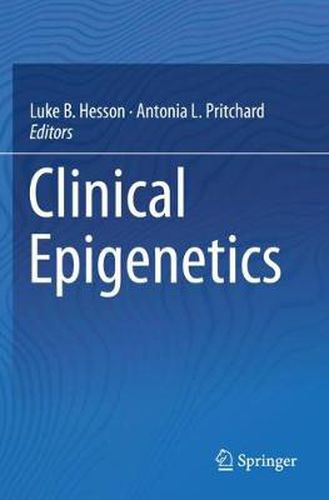Readings Newsletter
Become a Readings Member to make your shopping experience even easier.
Sign in or sign up for free!
You’re not far away from qualifying for FREE standard shipping within Australia
You’ve qualified for FREE standard shipping within Australia
The cart is loading…






In genetic pathology, epigenetic testing is rare and under utilised. In this book, we introduce epigenetics to a non-expert scientific audience and describe current and future clinical utility of epigenetic testing. By focussing on epigenetics in human disease this book will guide professionals (scientists and clinicians) to understand how epigenetics is relevant in a clinical context, and to implement epigenetic testing in diagnostic laboratories.
The book begins with a historical perspective of genetics and epigenetics and describes the work of pioneers who have helped shape these fields. The various mechanisms by which epigenetics can regulate the function of the genome is described. These include DNA methylation, histone modifications, histone variants, nucleosome positioning, cis-regulatory elements, non-coding RNAs and the three-dimensional organisation of chromatin in the nucleus. These are discussed in the context of embryological development, cancer and imprinting disorders, and include examples of epigenetic changes that can be used in diagnosis, prediction of therapeutic response, prognostication or disease monitoring. Finally, for those wishing to implement epigenetic testing in a diagnostic setting, the book includes a case study that illustrates the clinical utility of epigenetic testing.
$9.00 standard shipping within Australia
FREE standard shipping within Australia for orders over $100.00
Express & International shipping calculated at checkout
In genetic pathology, epigenetic testing is rare and under utilised. In this book, we introduce epigenetics to a non-expert scientific audience and describe current and future clinical utility of epigenetic testing. By focussing on epigenetics in human disease this book will guide professionals (scientists and clinicians) to understand how epigenetics is relevant in a clinical context, and to implement epigenetic testing in diagnostic laboratories.
The book begins with a historical perspective of genetics and epigenetics and describes the work of pioneers who have helped shape these fields. The various mechanisms by which epigenetics can regulate the function of the genome is described. These include DNA methylation, histone modifications, histone variants, nucleosome positioning, cis-regulatory elements, non-coding RNAs and the three-dimensional organisation of chromatin in the nucleus. These are discussed in the context of embryological development, cancer and imprinting disorders, and include examples of epigenetic changes that can be used in diagnosis, prediction of therapeutic response, prognostication or disease monitoring. Finally, for those wishing to implement epigenetic testing in a diagnostic setting, the book includes a case study that illustrates the clinical utility of epigenetic testing.